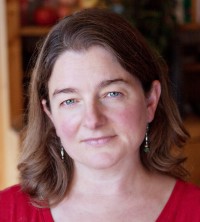“You might think,” I told a group of high school students gathered for “Service Day” at our church’s community meal, “that we have to deal a lot with scarcity here. We are trying to feed 250 people a week entirely from donations. But the truth is that our bigger problem is often how to deal with abundance.”
I pointed at the table where we had put donations that came in from a nearby Whole Foods: strawberries just about to rot, packages of guacamole, gallons of milk, cartons of organic yogurt, and dozens of loaves of bread. “How can we be good stewards of all that has been given to us? Abundance often causes as many problems as scarcity.”
This reality made a story I heard recently about LaSalle Street Church in Chicago particularly fascinating to me. In the 1970s, the church, along with three other churches in the area, invested a small amount of money and sweat equity to help build a housing complex for people of varying incomes. They retained a 2 percent investment in this housing project over the decades. Last month, after many negotiations, the building was sold—and the church received a check for $1.6 million dollars, the largest amount of money the church has ever received at one time.
LaSalle Street Church is an urban church with 200 members and dozens of ministries in the neighborhood and beyond. The finance committee could definitely come up with ways to spend the money. There are plenty of needs. But the elder board took $160,000 from the windfall, and a few Sundays ago Pastor Laura Truax used this to give everyone in the congregation a check for $500 to use, in whatever way they choose, for God’s work in the world. Every active attender in the church received this check.
The church has initiated a nine-month program in the teaching and practicing of discernment, especially in reading Elizabeth Liebert’s The Way of Discernment: Spiritual Practices for Decision Making in small groups. Before Truax handed out the checks, she preached a sermon on the parable of the servants and the talents. “The master wasn’t worried about the money,” she said. “He was worried about whether the servants were going to take a risk, whether they are going to do business.
“Do you think we didn’t wake up in the middle of the night and think that we might waste $160,000? Are we sure this is what God is calling us to do?” Truax asked.
There is no fine print here. None of you need to do anything but walk over to Leslie Hall and get the check. Is this unbelievably risky? Yes it is. Right now we are a church that is $50,000 behind its budget... We are doing this because this is what it feels like to do business with God: risky and crazy and vulnerable and incredibly threatening and exciting at the same time.
How the people of LaSalle Street Church are going to live their own real-life parables remains to be seen. It is a question of discernment, and the willingness to take a risk with what has been given. I don’t know yet how this applies to my one-more-day-left strawberries, but I am wondering about it.





